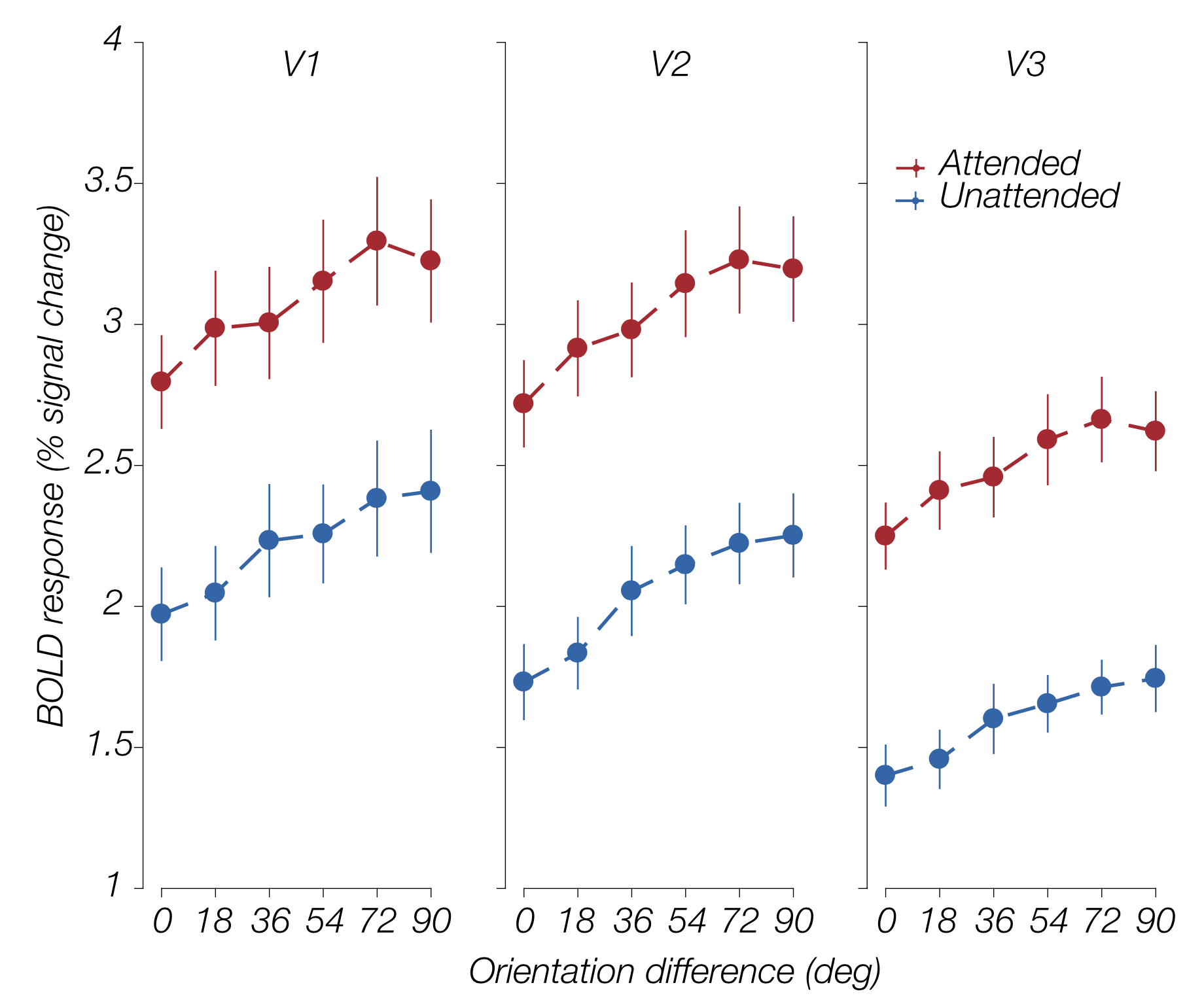Attention preserves the selectivity of feature-tuned normalization
Journal of Neurophysiology (2023)
Michaela Klimova, Ilona Bloem & Sam Ling
 Attention and divisive normalization both contribute to making visual processing more efficient. Attention selectively increases the neural gain of relevant information in the early visual cortex, resulting in stronger perceived salience for attended regions or features. Divisive normalization improves processing efficiency by suppressing responses to homogeneous inputs and highlighting salient boundaries, facilitating sparse coding of inputs. Theoretical and empirical research suggest a tight link between attention and normalization, wherein attending to a stimulus results in a release from normalization, thereby allowing for an increase in neural response gain. In the present study, we address whether attention alters the qualitative properties of normalization. Specifically, we examine how attention influences the feature-tuned nature of normalization, whereby suppression is stronger between visual stimuli whose orientation contents are similar, and weaker when the orientations are different. Ten human observers viewed stimuli that varied in orientation content while we acquired fMRI BOLD responses under two attentional states: attending toward or attending away from the stimulus. Our results indicate that attention does not alter the specificity of feature-tuned normalization. Instead, attention seems to enhance visuocortical responses evenly, regardless of the degree of orientation similarity within the stimulus. Since visuocortical responses exhibit adaptation to statistical regularities in natural scenes, we conclude that while attention can selectively increase the gain of responses to attended items, it does not appear to alter the ecologically relevant correspondence between orientation differences and strength of tuned normalization.
Attention and divisive normalization both contribute to making visual processing more efficient. Attention selectively increases the neural gain of relevant information in the early visual cortex, resulting in stronger perceived salience for attended regions or features. Divisive normalization improves processing efficiency by suppressing responses to homogeneous inputs and highlighting salient boundaries, facilitating sparse coding of inputs. Theoretical and empirical research suggest a tight link between attention and normalization, wherein attending to a stimulus results in a release from normalization, thereby allowing for an increase in neural response gain. In the present study, we address whether attention alters the qualitative properties of normalization. Specifically, we examine how attention influences the feature-tuned nature of normalization, whereby suppression is stronger between visual stimuli whose orientation contents are similar, and weaker when the orientations are different. Ten human observers viewed stimuli that varied in orientation content while we acquired fMRI BOLD responses under two attentional states: attending toward or attending away from the stimulus. Our results indicate that attention does not alter the specificity of feature-tuned normalization. Instead, attention seems to enhance visuocortical responses evenly, regardless of the degree of orientation similarity within the stimulus. Since visuocortical responses exhibit adaptation to statistical regularities in natural scenes, we conclude that while attention can selectively increase the gain of responses to attended items, it does not appear to alter the ecologically relevant correspondence between orientation differences and strength of tuned normalization.

